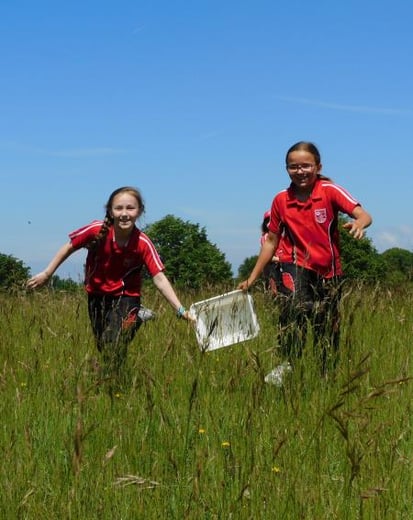Breaktime with Mr Dwyer, Head of Redmaids’ High School from Sept 2020
From mini-beasts to bird-watching: The value of exploratory science
by Mr Hayward, Teacher and Junior School Science Coordinator.
It is so important to give our young scientists the opportunity to link the theory they learn in the classroom, to real life, which is why at Redmaids' High Junior School, we grab every opportunity to get them out and about applying their knowledge.
Nowhere is this more important than exploring the biodiversity of the natural world. Taking part in local, national and global community science projects, allows young people to be at the forefront of ‘real science’.
Year 4 were abuzz, during a mini-beast workshop, led by the fantastic team from the Avon Gorge and Downs Wildlife Project. The girls went to the Downs to explore two local habitats, applying their understanding from classroom science to predict the animals they might find in different locations.
Armed with spoons and collection pots, they then put these predictions to the test, rummaging through wood piles and sweep-sampling the meadows, to collect and identify the mini-beasts that lived there. Before, of course, carefully putting them back in their homes.
This follows a project earlier in the academic year, which saw girls from Years 3, 4 and 5 take part in the City Nature Challenge. This annual challenge brings tens of thousands of people from around the world together, to search for and document their local biodiversity. It also reminds us of the healing power of nature and how important it is that we all respect and look after our natural environment.
The challenge saw the girls crawling under bushes and behind trees in the Junior School grounds to see what they could find. These activities, combined with an impromptu pond dipping session, reminded us just how biodiverse our gardens are. The girls recorded over 20 different species including centipedes, caterpillars, a Scarlet Tiger (moth larvae) and a Woodlouse Spider. Year 4 even used newfound woodworking skills to design and build bug houses to install in their own gardens and continue the search at home.
We also get involved with the Big Garden Birdwatch, a yearly event in which the girls and families pause their busy lives for a short time, to enjoy and record the birdlife in their gardens, before telling the RSPB which birds they see. The information is gathered to see if there are any changes in bird populations. It is this kind of project that reminds the girls why birds matter, and the part they can play in helping the environment.
I cannot stress how vital it is that we, as educators, help our pupils to make connections between theory and practice. Apart from bringing the subject to life and inspiring the next generation of scientists, it is also how we will help them see just how significant science will be in solving the big global issues of the future.
To find out more about how we inspire girls in STEM subjects:





%20(1).png?width=770&name=Copy%20of%20Languages%20postcard%20version%202%20(620%20x%20620%20px)%20(1).png)

.jpeg?width=770&name=image00002%20(1).jpeg)






-2.jpg?width=770&name=Untitled%20design%20(3)-2.jpg)


.png?width=770&name=Untitled%20design%20(87).png)

-3.jpg?width=770&name=Untitled%20design%20(1)-3.jpg)


-1.png?width=770&name=Untitled%20design%20(49)-1.png)
